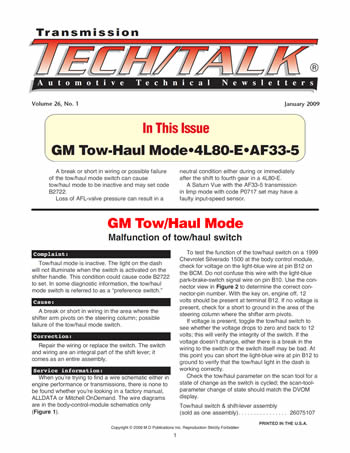No Fear
One of the great things about being a mechanic is that we usually aren’t afraid to tackle any mechanical challenges placed before us, even if they are brand new and we’ve never faced anything like them before. We tear into a job with the confidence that we will somehow be able to find the problem, fix it and put it back together. Experience gives us the nerve to try.

Internal Clearance
“Internal clearance” is the space between the impeller and the turbine in an assembled torque converter (Figure 1).
Hydraulically, it is the distance that the oil travels from where it exits the vanes of the impeller to where it enters the vanes of the turbine. Some rebuilders use the term “internal clearance” incorrectly. They use it to refer to the clearance between the internally stacked components of the converter. The correct term for the clearance between the stacked components is “end play.”
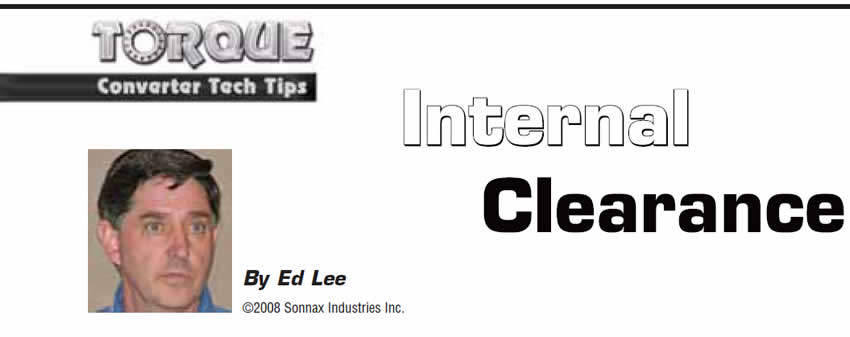
BorgWarner’s 4484 Transfer Case – Heart of the Hummer
In the current political and economic climate, the GM Hummer H2 is no longer “politically correct.” However, a lot of them have been produced and sold, and I suspect that more will follow.
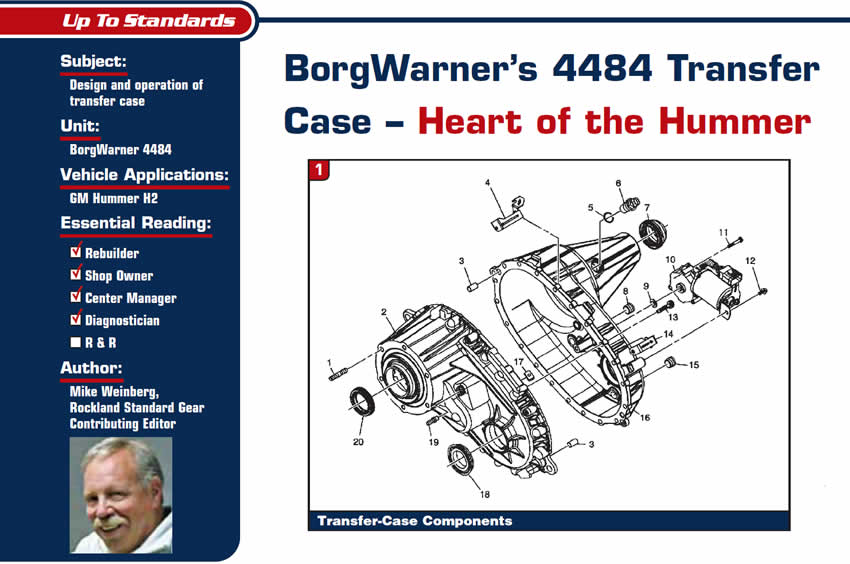
EPC Code Causing Loss of Power
Sometimes the programming of a vehicle’s computer can cause a symptom that can appear as a problem, leading a mechanic to try to repair a normal operation.
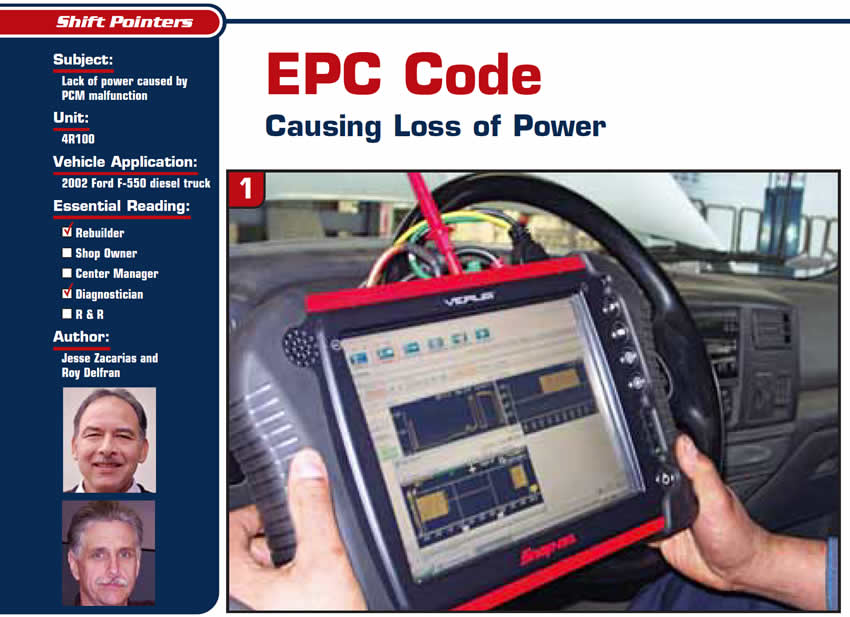
Mystery P0741 Code
A 2003 Ford F-350 4X4 was brought to a transmission shop in Eugene, Ore. The customer complaint was an intermittent P0741 code. The code did not seem to occur when the vehicle was driven locally but happened every time it was taken on a longer trip. The customer also noticed that the code would set whenever any additional load was placed on the vehicle. The additional loads included traveling in hilly terrain or pulling a trailer.
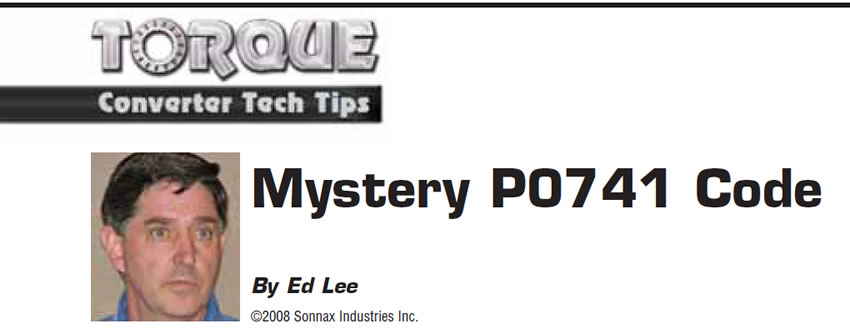
The Difference Between Ordinary and Extraordinary Service
Quality cannot be compromised when cars are repaired, and customers should never be surprised the way my wife was when picking up her truck. If we have to wait for the “right” clip, or even weld, grind, tap and drill a part to ensure it is “right,” we need to communicate that information to the customer so they can make an informed decision. We all need to be diligent about the “little things” when we finish a job. Who wants to have the “Check Engine” light pop on or have parts fall off on their way home?
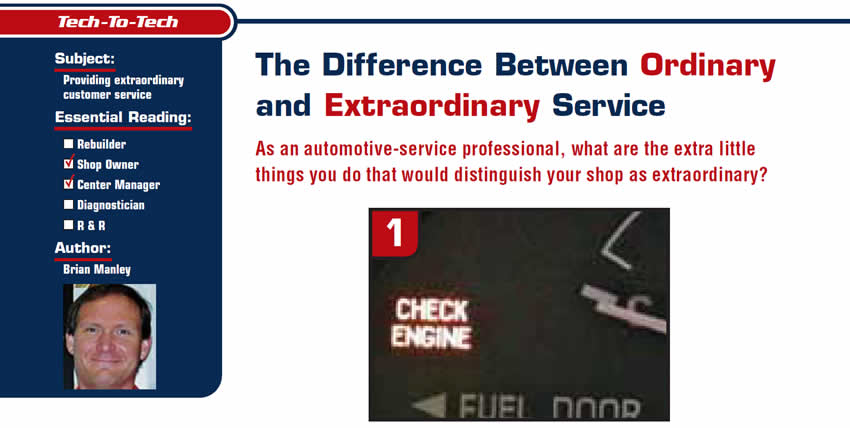
February 2009 Issue
Issue Summary:
Ford vehicles from the 2004 model year up equipped with the 4F50N transaxle may exhibit a 1-2 slide bang before or after overhaul.
1999-and-up Ford vehicles equipped with the AX4S transaxle may exhibit a 1-2 neutral condition after overhaul.
Before or after overhaul, a BMW/Isuzu with the 4L30-E transmission exhibits soft or flared upshifts, slipping or gear-ratio-error codes.
A 2007 GMC Acadia, Buick Enclave, Pontiac G6, or Saturn Aura or Outlook equipped with a 6T70 transaxle may develop a problem illuminating the “Check Engine” lamp, with one or more codes present.
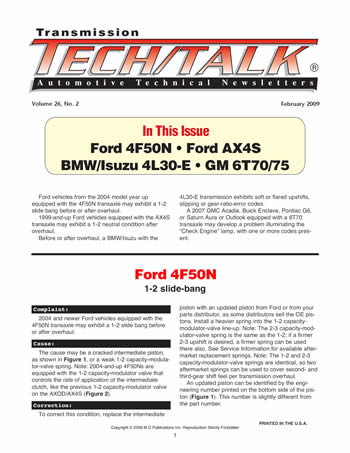
There Are Many Motors in a Vehicle
The vehicles we are working on today contain a huge number of motors. Although there is one central power plant that provides power to propel the vehicle, there are increasing numbers of electric motors that provide power sources for other options. We have windshield-wiper motors, fan-blower motors, power-seat motors, convertible-top motors etc.
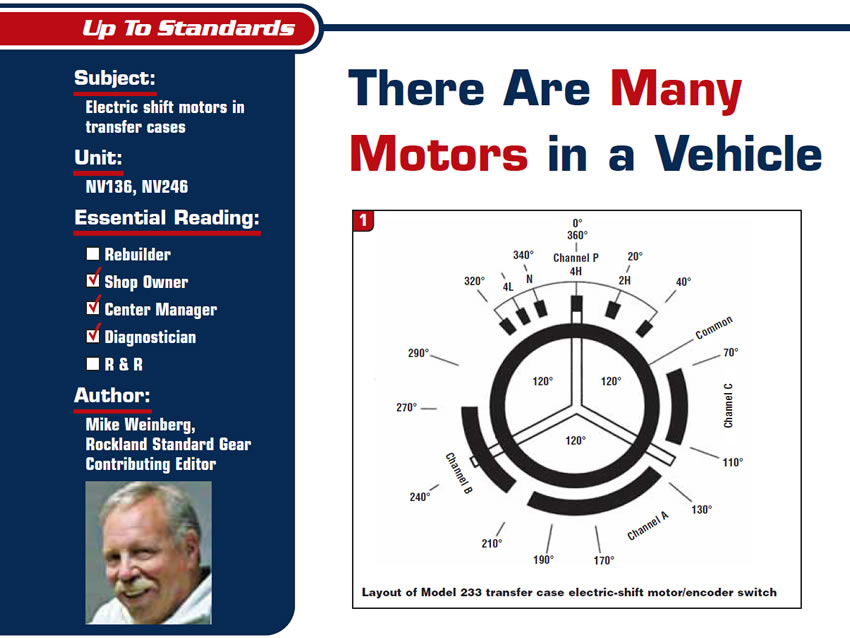
5L40-E/5L50-E
As valves and bores begin to wear and allow leakage, the easiest path for the leak is to exhaust. Two things happen as a result of this wear-induced exhaust leak. First, the leak allows a pressure drop, which is loss of control pressure. Valves or components no longer move, apply or respond as intended. Second, the amount of exhausted fluid and, therefore, the amount of air entering the sump are increased. The amount of aeration can easily surpass the sump’s ability to dissipate the air before the pump picks it up. The minimal sump capacity of the 5L40-E makes it especially vulnerable to this problem.
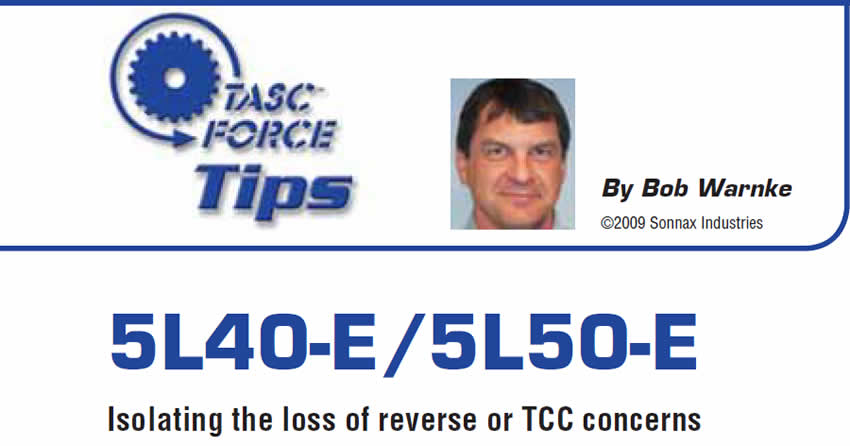
Another Transmission Mutation – Part 1
In the never-ending variety of transmissions on the road today, there is yet another that may find its way onto your bench. A mutation from the F4A40-series transmission used in Mitsubishi and Hyundai vehicles, it’s called the A4CF2 (Figure 1). This is a four-speed transmission (Figure 2) being used in 2006 and later Kia Spectras and 2007 and later Hyundai Elantra (HD).
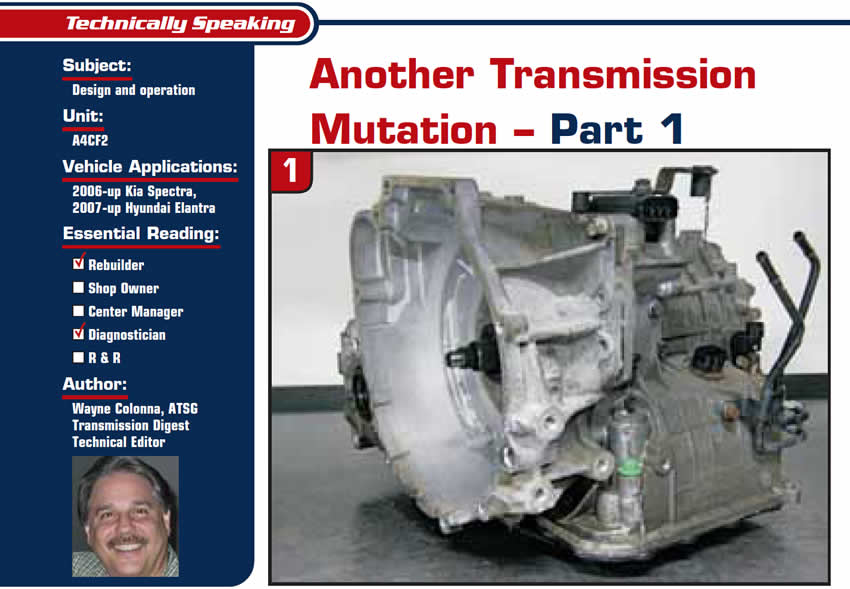
Appearance Matters More than You Know
Good customers and employees are not usually lured to do business with or work for a company on the basis of its deeply hidden qualities or virtues. They come because of the perception of these attributes. It’s what people see on the outside that makes them decide whether they want to learn more about a company they will eventually choose to buy from, sell to or work for.
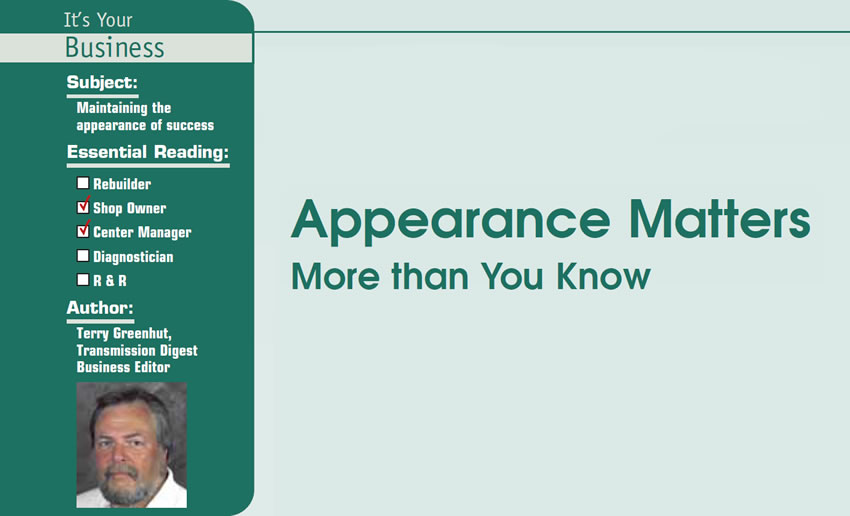
January 2009 Issue
Issue Summary:
A break or short in wiring or possible failure of the tow/haul mode switch can cause tow/haul mode to be inactive and may set code B2722.
Loss of AFL-valve pressure can result in a neutral condition either during or immediately after the shift to fourth gear in a 4L80-E.
A Saturn Vue with the AF33-5 transmission in limp mode with code P0717 set may have a faulty input-speed sensor.
